Cushioning
Table edge cushioning
Small benchtop cushions
 |
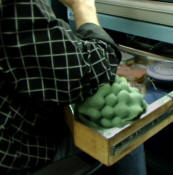 |
| Box used as arm support | Foam pad brought from home |
Principles affected
Related pages
Workstations:
Background
There are two often-interrelated issues:
Support for the arm when extended — to prevent fatigue that can cause pain as well as interfere with production. A common situation is when the work is raised to improve visibility. Usually arm support is required.
Cushioning for any part of the arm that rests on a hard edge or surface — to minimize pressure points on the elbow or arm that can create discomfort and also interfere with work.
Objectives
Eliminate static load on shoulder, i.e. minimize fatigue. Eliminate pressure points on any part of arm. Place hand and arm in good working position.
Ideas and options
Supports
Workstation ledge
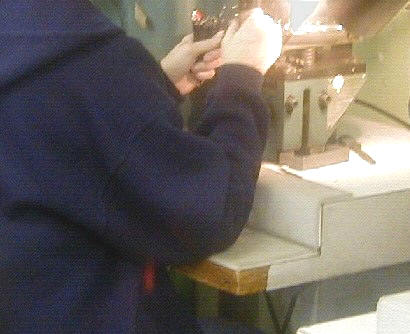 |
| Elbow ledge built into workbench |
In the example shown above, the employee is feeding electrical leads into a crimping machine, which requires good visibility and thus is positioned almost at eye level. A ledge was built into the workstation and padded to provide arm support.
Slanted supports
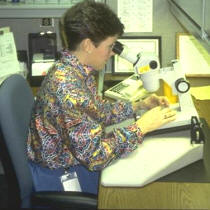 |
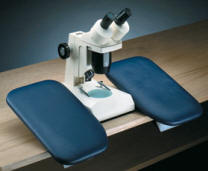 |
| Microscope on top of slanted, soft support | Commercially available microscope support (www.alimed.com) |
Working with arms extended on miniscule items can quickly fatigue muscles, which creates slight tremors that interfere with the work. Thus there have been special needs for arm supports for microscopes. The concept can be applied in other situations.
Articulating arm supports
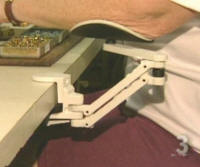 |
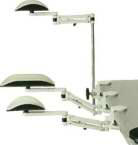 |
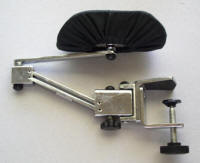 |
| Click for video: Articulating armrest | Height adjustment optionswww.alimed.com | www.ergoguys.com |
One of the best types of arm supports is this articulating arm version. It supports the forearm yet moves easily when working, thus very beneficial for light assembly and manufacturing.
Fixed supports
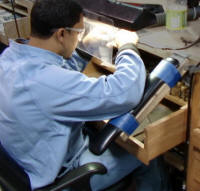 |
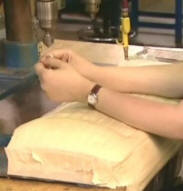 |
| Fixed forearm support | High forearm pad |
Countless types of simple arm supports can be devised to support the arms in an extended or raised position. Ideally, it would be better to lower the work to position the elbows at the sides of the body, but supports like these can be helpful.
Designed into machine
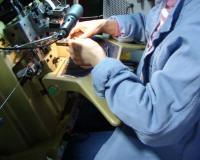 |
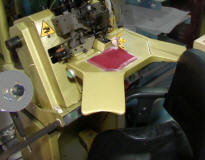 |
| Machine with built-in arm rests | |
It is rare for machinery to be designed with built-in arm rests, but the idea has merit and should be considered more often.
Cushions
Table edge cushions
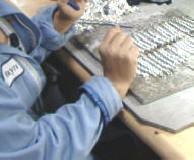 |
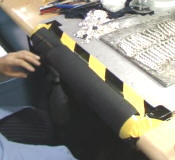 |
| Sharp edge | Pipe wrap and tape |
Resting the forearms on the hard edge of a workbench is a very common issue, fortunately one that can be inexpensive to fix. In the example above, all that was needed was pipe wrap and tape.
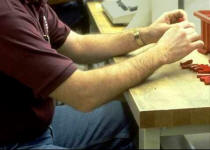 |
 |
| Hard table edge | “ErgoEdge”www.ergosource.com |
More professional-looking edging material is commercially available.
Small benchtop cushions
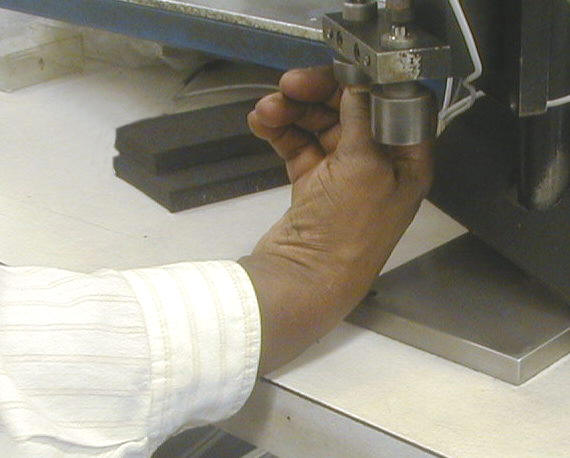 |
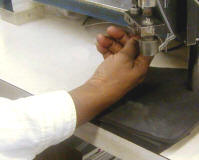 |
| Before: Bent wrist | After: Thick padding |
These photos show a task that required pushing materials upwards to a machine. The upward exertion was moderate, but the position had to be held for short periods, thus creating a static load. The bench could be used as a support, but doing so was awkward. Adding a small stack of unused computer mouse pads resulted in significant improvement.
 |
 |
| Miscellaneous cushions (www.alimed.com) | |
There is no limit to the types of small pads and cushions that can be used to support the arms or cushion them against hard edges. Wrist rests used for computer keyboards are readily available and can be used in manufacturing settings.
